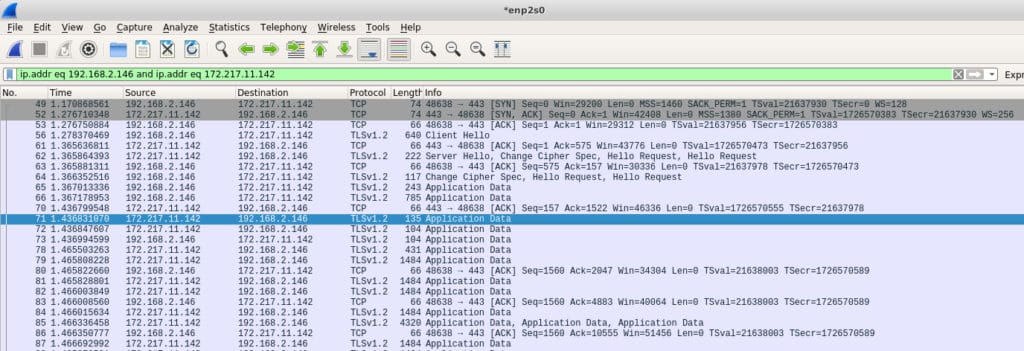

Use -image and -tcpdump-image flags (or KUBECTL_PLUGINS_LOCAL_FLAG_IMAGE and KUBECTL_PLUGINS_LOCAL_FLAG_TCPDUMP_IMAGE environment variables) to override the default container images and use your own e. Type in this command to store your tcpdump commands output into a file: sudo tcpdump-w capture.pcap. pcap file that can be later analyzed with tcpdump or other network monitoring tools like Wireshark. if specified, ksniff will use the specified path as the remote path to upload static tcpdump to. Upon execution, tcpdump will store the captured data into a. if specified, ksniff will use this path as the local path of the static tcpdump binary. if specified, ksniff will redirect tcpdump output to local file instead of wireshark. Sometimes the easiest solution is to use tcpdump to capture traffic on the remote server, and then run Wireshark to take a look at it.

Unless you have professional networking equipment, it’s hard to analyze traffic that doesn’t involve your computer. I look at it with wireshark The customer tells: Please look at the traffic at 8 oclock. specify a specific tcpdump capture filter. Wireshark is a powerful tool, but it has its limitations. This will list all your network interfaces. Step one is figure out what network interface you want to dump.

Its functionality is similar to Wireshark, but it’s especially helpful when you can’t access a graphical user interface and when automation is essential. If omitted, all Pod interfaces will be captured.ĬAPTURE_FILTER: Optional. tcpdump comes on OSX (or if it doesn’t, something installed it without me knowing). tcpdump is a command-line tool used to capture traffic on the network and analyze captured packets of data passing through your machine. If omitted, the first container in the pod will be chosen. used to specify the target namespace to operate on.ĬONTAINER_NAME: Optional. the name of the kubernetes pod to start capture it's traffic.


 0 kommentar(er)
0 kommentar(er)
